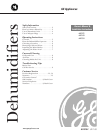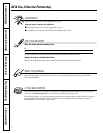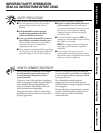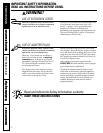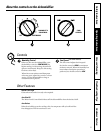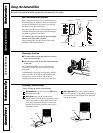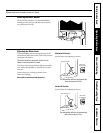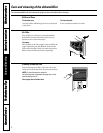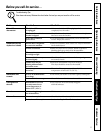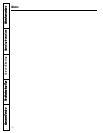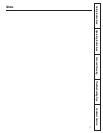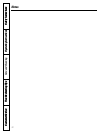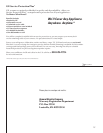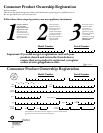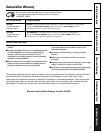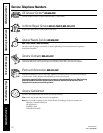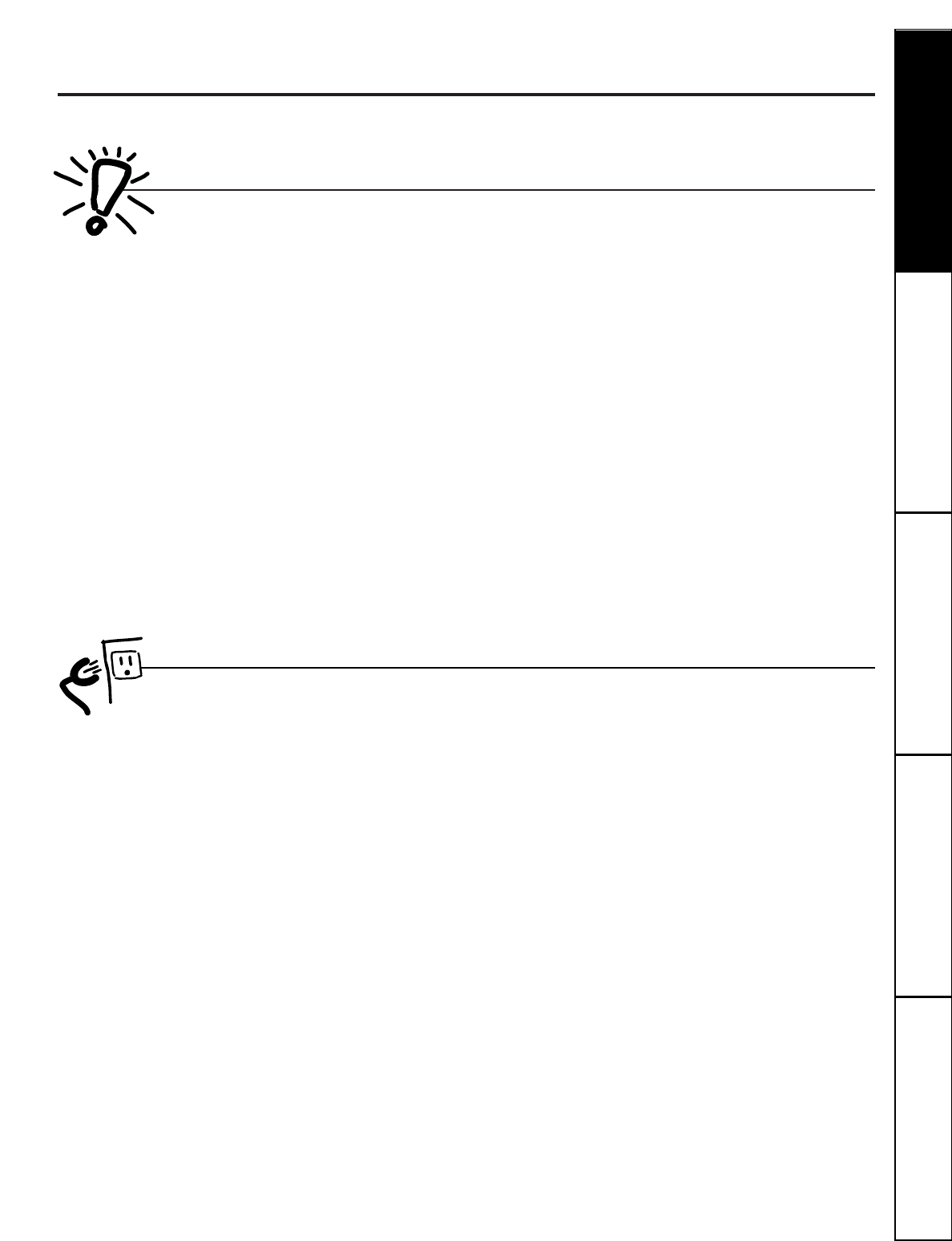
IMPORTANT SAFETY INFORMATION.
READ ALL INSTRUCTIONS BEFORE USING.
■ Use this appliance only for its intended
purpose as described in this Owner’s
Manual.
■ This dehumidifier must be properly
installed and grounded as described
in this manual before it is used.
■ Never operate this dehumidifier in an area
that is likely to accumulate standing water.
If this condition develops, for your safety
disconnect the power supply before
stepping into the water.
■ Never unplug your dehumidifier by pulling
on the power cord. Always grip plug firmly
and pull straight out from the receptacle.
■ Repair or replace immediately all electric
service cords that have become frayed
or otherwise damaged. Do not use a cord
that shows cracks or abrasion damage
along its length or at either the plug or
connector end.
■ Turn the humidity control to
OFF
and
unplug your dehumidifier before making
any repairs or cleaning.
NOTE:
We strongly recommend that any
servicing be performed by a qualified
individual.
■ For your safey, do not store or use
combustible materials, gasoline or other
flammable vapors or liquids in the vicinity
of this or any other appliance.
When using this dehumidifier, always follow basic safety precautions, including the following:
SAFETY PRECAUTIONS
3
Customer ServiceTroubleshooting Tips
Operating Instructions
Safety Instructions Care and Cleaning
Do not, under any circumstances, cut or remove
the third (ground) prong from the power cord.
For personal safety, this appliance must be
properly grounded.
The power cord of this appliance is equipped
with a 3-prong (grounding) plug which mates
with a standard 3-prong (grounding) wall
outlet to minimize the possibility of electric
shock hazard from this appliance.
Have the wall outlet and circuit checked by a
qualified electrician to make sure the outlet is
properly grounded.
Where a 2-prong wall outlet is encountered,
it is your personal responsibility and obligation
to have it replaced with a properly grounded
3-prong wall outlet.
The dehumidifier should always be
plugged into its own individual electrical
outlet which has a voltage rating that matches
the rating plate.
This provides the best performance and also
prevents overloading house wiring circuits
which could cause a fire hazard from
overheated wires.
HOW TO CONNECT ELECTRICITY



